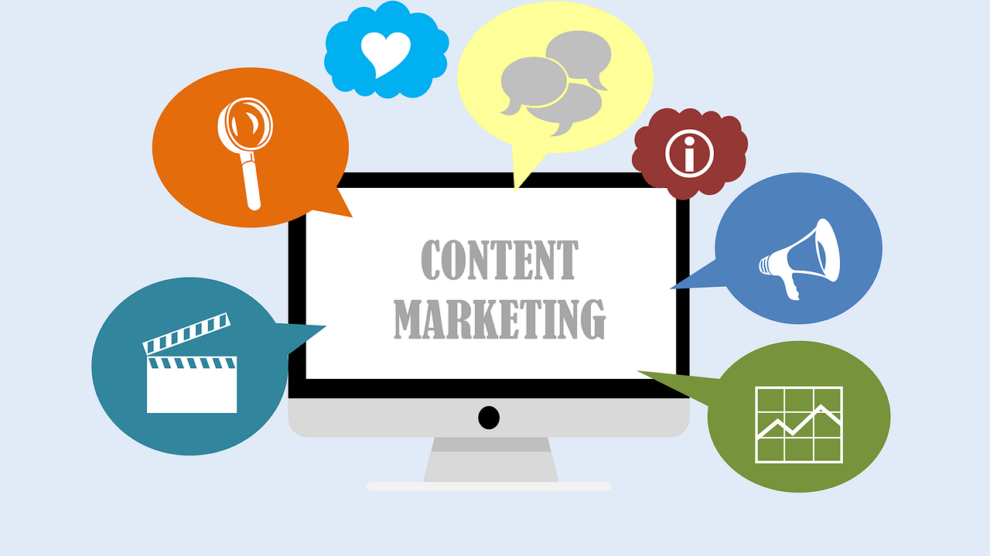Content marketing is no longer “nice to have” or “just another promotional tactic that you can substitute with another one”. In 2020 and beyond, content marketing is something that you have to prioritize.
Why, you ask?
Because your customers want it. 84% of buyers expect brands to create content. They expect it.
Your job is to deliver. And you can’t cut corners using ads.
91% of the people who might buy your products don’t click on ads. Why? Because the average person sees around 5000 ads per day. Every day!
So they don’t even see them anymore.
With people’s buying habits changing, so must your marketing. Content is your safest bet to draw the attention of the smart, empowered consumer.
However, content marketing can get complicated. There are countless options to choose from. Hiring a digital marketing agency to create and promote your content for you is always a great option. But you have to know exactly what to ask for.
So, what are the content assets a small business should invest in?
Let’s see!
1. Content strategy
I never recommend just diving into content writing without a clear plan. How will you know what to create and how to promote your content then?
Your content strategy doesn’t have to have 100 pages of detailed analyses (although that never hurts). But it has to incorporate a few key points:
- Whom are you creating content for? Who is your ideal buyer, what are their needs and what do they want to read about?
- What are your business goals? How much YoY growth do you need? How many new clients do you have to get on board to achieve that growth?
- Where do your customers’ goals and your own goals intersect? In other words: how can you create content that’s relevant to both of you?
The answer to these questions will jumpstart your content strategy. The last question is especially important. You want to steer clear of overly promotional topics that don’t resonate with your customers at all.
At the same time, you don’t want to create content just to put out some information. You’re not Wikipedia. Your goal is to sell your products or services, so your strategy should be focused on topics and promotion means that help you achieve that goal.
Case in point: when I launched my first agency, Idunn, we used to blog a lot and write in-depth guides on how to create better content and how to promote it better. We had a lot of traffic. What we didn’t have were leads.
Those who read our posts were other writers, not potential clients. Plus, our articles didn’t really advertise our service – they just taught.
It took us a few months to discover the error of our ways. Then we switched gears to articles like how to hire top SEO content writers – the kind of guides our audience (aka the people who might buy our writing services) were interested in.
We saw the difference after just a few posts. Yes, our traffic dropped, but our lead generation was finally on point. You can read more about how we convert blog readers into paying customers here.
It’s an age-old lesson and perhaps that is why it’s so easy to overlook: you have to come up with a win-win situation for both you and the customer.
When you create your content strategy, always start with the user intent. As soon as you have that all figured out, you can move on to finding out how to match it to your business goals.
Need a more detailed approach to creating a content strategy? My guide on SaaS content strategy is very comprehensive and it can easily be adapted to match other industries as well.
2. Wow-inducing content
Of course, it’s not enough to know what type of content you need to produce. You also have to make sure that that content is worth reading or watching.
The internet is full of so-so articles and videos. No one has time for that.
If you really want to stand out of the crowd, yours needs to be different…in a good way.
What does it take for content to catch the elusive attention of your potential customers? Well, at least three things:
- Authoritativeness: never tackle topics you don’t ace. It will show. Write about what you know well and explain why you are an authority on the matter and why people should take your advice. Don’t worry – with time, you won’t have to keep explaining why you’re good at what you do. Your name will be easily recognizable – that’s content-induced brand awareness for you.
- Results-oriented: you don’t create content just for the sake of creating it. You do it to solve real problems for your audience. Take a look at Google Trends, forums and social media hashtags. You’ll know what people often ask. Answer those questions for them.
- Well-written: not even the most interesting of topics will draw readers if it’s poorly written and poorly formatted. Make sure that your content has the right tone of voice for your audience, that it’s well researched and all-around written in a captivating manner.
Can’t figure all of this on your own? You can always hire an agency to take content writing off your hands. One of the agencies I run helped a company generate 50% more leads through content writing alone. That’s the power of a specialized team that lives and breathes content.
3. Great graphics
A picture speaks a thousand words – this saying rings true for every piece of content you create. Your audience loves visuals in any shape or form: photos, graphs, infographics, videos – they all make the text easily readable and easily skimmable.
And yes, graphics are a content service. They add to the written word and make any wall of text more digestible.
65% of us are visual learners. This means that we find it easy to retain information if it’s presented in a visual form.
So go beyond the usual hero photo and embed all the relevant types of graphics you can think of in your copy. The advantages of doing so go beyond easily readable text – visuals are also more likely to be shared on social media, thus bringing more traffic to your website.
4. On-point social media content
Most of us are accustomed to referring only to blog posts, web pages, podcasts and videos as content. But the truth is pretty much everything you communicate is content.
Social media posts included.
This is why almost every brand you can think of has a social media presence. And it’s no wonder since 64% of consumers say that they prefer sending a Facebook message to drafting an email to a company.
But, aside from answering your customers’ messages on social media, how can you make sure your social media content is the best it can be?
Let’s take a look at a few ideas:
- Find the ideal posting frequency balance: some brands can post multiple times a day, while other thrive when they only post once every two days. It’s different for everyone, so you have to evolve to find your own “groove”. But despite what experts and reports tell you about frequency, always make quality your priority. Only post relevant things, don’t cram your timeline just for the sake of posting.
- Post various formats: blog articles are great. But alternate them with videos and infographics too. Also, third-party content is a great idea for when you want to spice things up.
- Don’t be overly promotional: remember, we’re talking about content, not ads. When in doubt, use the 80/20 rule: 80% of your posts should be entertaining or informational and no more than 20% of them should be blatantly promotional.
- Hire a dedicated social media manager (or an agency): you see a 13-year old raking in millions of followers on social media so it’s easy to assume that it’s not that hard to find the right content to post. But social media strategy involves more than finding the right hashtags and a bunch of cat videos. A dedicated social media manager works tirelessly to put out fires, curate content, analyze reports and come up with the best posts for your company. At Idunn, our social media marketing and management services are tailor-made to every brand we work with and customized to help you meet your business goals.
Wrapping things up
Content marketing means more than the four tactics above. However, these are the ones that shouldn’t miss from any company’s strategy. If you’re not sure where to invest your budget in 2020, start here.
And if you’re ready to dive in, we can always help with content strategy and content execution. Let’s talk about taking your content game to the next level!





